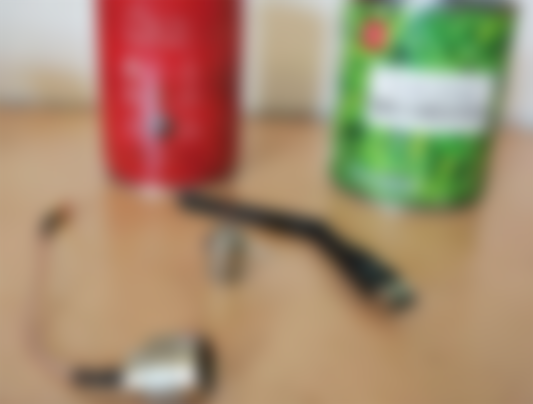DIY answers for broadening Wi-Fi have existed however long Wi-Fi itself has. Cunning web clients have been utilizing everything from kitchen foil and food sifters, to home made Yagi style recieving wires to help their Wi-Fi ranges. While there are numerous ways you can fine tune your home Wi-Fi framework without building extra equipment, there are basic DIY arrangements that can likewise have a genuine effect to your surfing experience.
Before you start however, ensure you have checked whether you have some other issues with your Wi-Fi association.
Today we will assemble a modest waveguide Wi-Fi extender, utilizing the least difficult plan conceivable.

For what reason would you need to make something like this? Numerous individuals use them to stretch out their Wi-Fi sign to a difficult to arrive at part of the home, or even stretch out their Wi-Fi to the lower part of the nursery. They can likewise be extremely valuable to individuals who depend on open web access. Whenever set up effectively you could interface with a public Wi-Fi area of interest from a lot further afield than expected. Ideal for when your own web goes out and you need to have the option to continue to surf in your shoes!
While there are numerous minor departure from this kind of construct, today we are making progress toward an equilibrium of cost and effortlessness. This guide should assist you with building your own reach boosting Wi-Fi cantenna.
Quite possibly the most famous varieties of this training is known as the Pringles can reception apparatus, or cantenna for short, which uses both a waveguide 'test' plan and a Yagi style recieving wire to help signal pickup from your PC, or lift the scope of your switch.
While these recieving wires were a stunning accomplishment of DIY designing for their time, they had a couple of essential blemishes. The overall agreement is that a can with an inside width of somewhere in the range of 76mm and 101mm work best, with 92mm being the sweet spot. Timing it at an inside breadth of 72mm, a the Pringles can is excessively flimsy. For it to be viable it would need to be above and beyond a meter long. Likewise, there are clashing feelings with regards to whether the Yagi authority configuration is any more viable than a proportional waveguide plan.
By switching the kind of would we be able to utilize, we will make a waveguide recieving wire that will beat the Pringles can, and furthermore requires significantly less work to make.
You Will Need

- A metal can – as near 92mm width and 147mm tall as could really be expected, however varieties can work!
- Female N type connector - accessible at numerous gadgets stores, or on Amazon
- Small piece of 12 measure (around 2mm thick) copper wire to use as the airborne test – I rescued some out of an old attachment.
- A female RP-SMA to male N type connector – otherwise called a 'Braid' connector. While is conceivable to make these yourself, numerous organizations give these pre-made. I discovered mine at a neighborhood side interest hardware store, however they are likewise accessible on Amazon.
- A USB Wi-Fi connector with removable elevated – anything like this will turn out great, inasmuch as the flying can be eliminated.
- A patching iron and modest quantity of bind
- Wire cutters
- A file to file down sharp edges
- A drill to make an opening in the can – ideally with a venturing bit.
Picking Your Can
The first choice to make is which sort of can to utilize. Our preferred size is significant, as there are set central measurements which permit the cantenna to work. Post for jars with a 92mm breadth that are around 147mm long, however you may find something precisely of that size hard to find!
Time to make a beeline for the shops with a measuring tape and see what you can turn up.
You can utilize this instrument to figure whether the jars you have gathered would be compelling. The significant part to focus on once you have the computations for your width is within length. The nearer you get to the measurements from the mini-computer, the better your cantenna will work.
I found that an espresso can (distance across 88mm), and a huge food can (101mm), were nearest to the correct size. The espresso can was a little short on length, however the 2cm it is missing is still a remarkable contrast from the 26cm of length the Pringles can misses the mark on. The food can came up to practically consummate measurements, however the edges are furrowed, which will affect its presentation.
I chose to make the two jars into cantennas - this guide covers the development of the espresso can, however the development is by and large the equivalent for both, just with various separating according to the computing device above.
Making the Probe
The test is the little piece of copper wire which will stand out into the center of our can. We will join this test to the female N type connector utilizing our welding iron. Utilizing a similar apparatus as above, we can see that for my espresso can's breadth we need a test length of 30.7mm.
I would instruct cutting a marginally huge piece regarding wire in any case, and binding it into place inside the metal attachment on the highest point of the connector.
The length of this test is vital – and you should make certain to gauge from the lower part of the metal connector to the where the tip of the test will be. Indeed, even a millimeter off here and your Cantenna may not fill in too as it could!

Measure cautiously to the length specified in your counts, and slice the test to the right length.
Making Holes
Since we have our test and N connector together, we need to mount them in the ideal put on the can. For the espresso can's breadth, we need our test to be set precisely 53.3 mm from the lower part of the can. Indeed, this must be pretty much as exact as could be expected, so take as much time as necessary!
It is likewise significant that this estimation is to be taken from the base of the can, not the edge around the base.
When you have your exact estimation the time has come to cut the opening. I utilized a drill followed by a point processor on my borer – which was fiddly most definitely! Just to test I likewise made one utilizing just a screwdriver to poke a hole, and a couple of needle nosed pincers to gradually twist it outwards until it was the right distance across. Neither of these strategies are ideal, and I would prescribe utilizing a venturing bore to make this part simpler. Keep in mind: you are cutting metal, and metal is harder than eyes, so perhaps wear something to cover them.
Whichever strategy you use, measure the width of your N type connector with the nut eliminated, and make an opening marginally greater, so the N connector can slide in. I found that making a marginally too little opening which I at that point widened utilizing a file functioned admirably. I would likewise suggest filing down any sharp edges at the highest point of your can now as you'll have to put your hand in there to fix it.
You should now have the option to fit the connector, by pushing it through and joining the nut from within. Be cautious while doing this! I figured out how to cut my hand twice within edge of the espresso can. I surmise somebody neglected to take his own recommendation with the filing.
Assembling everything
Since the can itself is finished, we need an approach to join it to our PC or switch to receive the rewards.
To append it to a PC, embed the UBS Wi-Fi connector, and introduce it's driver programming. Whenever that is done, eliminate the elevated that accompanies the connector by unscrewing it, and append the more modest finish of your braid connector all things being equal. Append the opposite finish of the ponytail to the distending N type connector.
That is it! You are finished!
To test it out, take your PC to where your Wi-Fi signal is typically low, and point the cantenna toward the path your Wi-Fi signal comes from. Where conceivable, an unmistakable view is ideal, however I discovered there to be a significant sign lift in any event, pointing it through the thick dividers of the old high rise I live in. You will have to ensure you are utilizing your Wi-Fi connector – which you can change in Network and Sharing Center - > Adapter Settings.
You may find that you improve signal with the test pointing sideways instead of straight up – on the off chance that you can see the aerials on the switch you are interfacing with, attempt to imitate their direction for the best outcomes.
Numerous individuals interface their cantennas to stands to oversee heading and direction, for this situation a touch of Macgyvering with zip ties and an old plastic plant pot did the work impeccably!
I tried both the espresso and food can plans, and both supported my Wi-Fi significantly.

I utilized a free piece of programming called Homedale to quantify the strength of the Wi-Fi signals I was getting, in the two cases you can see the cantennas (blue line going off the highest point of the chart) gave a significantly higher sign when contrasted and the inward Wi-Fi beneficiary of the PC (yellow line). The readouts from the connector posting page in the product show a normal of around a 20dBm lift.
While the espresso can cantenna is as yet not ideally measured, it performs well as an exhibition sponsor, and with the food can performing admirably around other people as well, I am anticipating trying these over a more prominent reach.
Much of the time this will be the contrast between irregular, near unusable web and a stable usable association. In the event that you need to expand the distance between your PC and the cantenna, I would suggest utilizing a USB augmentation link.
Interfacing with a Router
Another way to deal with take is to interface the cantenna to your switch to help the sign from the source. By pointing a communicating cantenna from your switch to a getting cantenna at your PC, you will have the option to support your reach significantly.
This is awesome on the off chance that you need to guide your Wi-Fi sign to a storehouse, or to give your nursery full inclusion. You could even utilize it to impart your association with a close by house on the off chance that you are feeling neighborly! It is important nonetheless, that this lift will be directional relying upon the direction of the can, and keeping in mind that it will help massively one way, it might restrict the strength of the sign in different territories.
Numerous switches have aerials connected to them which will fit our ponytail's RP-SMA side, however you may find you will have to refresh your switches firmware to get the most use out of this by boosting the sign it gives. It merits doing this in any case nonetheless, as you can hope to see extraordinary execution increments from this overhaul alone.
You may find your switch has no RP-SMA connector. If so you have two alternatives.
Firstly, you can attempt to add one yourself. YouTube client Mix Bag has a video taking us through adding a connector to his stock Virgin Media Super Hub.
This strategy is somewhat included, and may change from one switch to another. In the event that this appears to be something somewhat out of degree, another unimaginably basic approach to help your Wi-Fi signal is to make an illustrative reflector to put behind it and center the sign.
There are numerous varieties of this, yet Instructables client MarkYu has a speedy and straightforward manual for building one - the lone change you would have to make to the form is to stand the reflector behind your aeronautical less switch.
While there are numerous ways to deal with improving Wi-Fi range, these forms are a brisk and basic approach to improve it without using up every last cent.
Have you fabricated a Cantenna previously? Have you thought of your own insane plans for boosting your Wi-Fi signals? Tell me in the remark area beneath!



